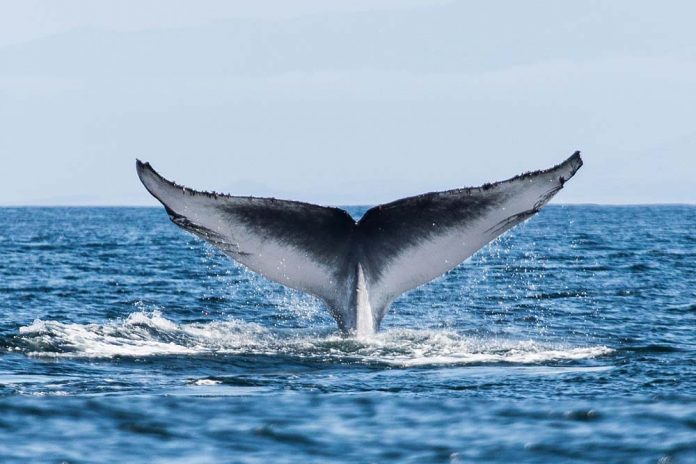Before you start reading, I have a confession to make. My last three Google searches were “asteroids breaking up in the atmosphere,” “aerodynamic heating,” and “surface area of a blue whale.” If you have to know, I am indeed a fan of The Hitchhiker’s Guide to the Galaxy, especially the events that led to a whale appearing high up in the atmosphere of an Earth-like planet. And yes, I know what you’re thinking. Those missiles didn’t turn into a blue whale, they turned into a sperm whale. And a bowl of petunias. Well, I have two responses: one, if I’m going to be dropping any gargantuan animal from a ridiculous height, it’s going to be the biggest animal that has ever existed on this Earth. My second response is that I’m sure that most whales act fairly similarly when falling through the atmosphere. Any whale-based calculations done here are estimates, so if you really want to, you could swap out my majestic blue whale for its smaller, less colourful cousin. But they might not be quite as stealthy as the blue whale. And yes, you did hear me right. Stealthy.
Without further ado, let’s get to the question. If we have a whale falling from way up in the atmosphere — like what happens in The Hitchhiker’s Guide to the Galaxy — what events would unfold?
We could compare our whale to an asteroid entering our atmosphere, but that isn’t a great idea, for a few reasons. First off, whales are not big rocks. Of that I am quite certain. Second, our whale is not entering the atmosphere at speeds of 10 kilometers per second. It begins to plummet from rest, reaching much more reasonable speeds; so instead of burning up in the atmosphere, our goliath reaches the ground in one piece. An interesting result of blue whales being truly enormous is that their terminal velocities are correspondingly huge. They fall so fast, in fact, that a blue whale would have a terminal velocity that just barely exceeds the sound barrier. This means that if you were standing in its path, the air wouldn’t have time to carry the sound waves to your incredibly unlucky ears below, and the whale would hit you before you could even hear it coming. The grisly impact would have an energy yield equivalent to that of two tonnes of TNT, enough to turn a whale into something that bears little semblance to the original creature. Due to the likely messy explosion of debris, I would stay a very healthy distance away from any falling whales you might see. Although I would say that advice holds for any large falling objects. If it’s large, and falling towards you, run.
But what if instead of appearing in our atmosphere with relatively low speeds, the blue whale is travelling with asteroid-like speeds? While doing research to make sure I would get my numbers right, I came across why regular old asteroids break up in the atmosphere. The immense head-on stress of the asteroid ramming into the air causes it to pancake, either fracturing or disintegrating outwards in a large (and very pretty) explosion. Unsurprisingly, the whale would fare worse than the big piece of rock. It would quickly turn from a beautiful creature into a fast-travelling, vaporized cloud of debris, burning up as it went. It’s like a fairy tale in reverse. On the brighter side, it would make an amazing light show at night.
Unfortunately, having blue whales burn up in the atmosphere is not possible with our current technology. The surprisingly good news is that space whales are actually going to be possible within the next 15 years! The Space Launch System (SLS) will be able to reach low Earth orbit carrying a massive 130 tonne payload, which just happens to be about the weight of a fully-grown blue whale. Now, I know NASA has grand plans for the SLS, and it may gather the concern of several animal rights boards, but I for one would love to have the SLS tested with a whale on board. For Douglas Adams’ sake.


